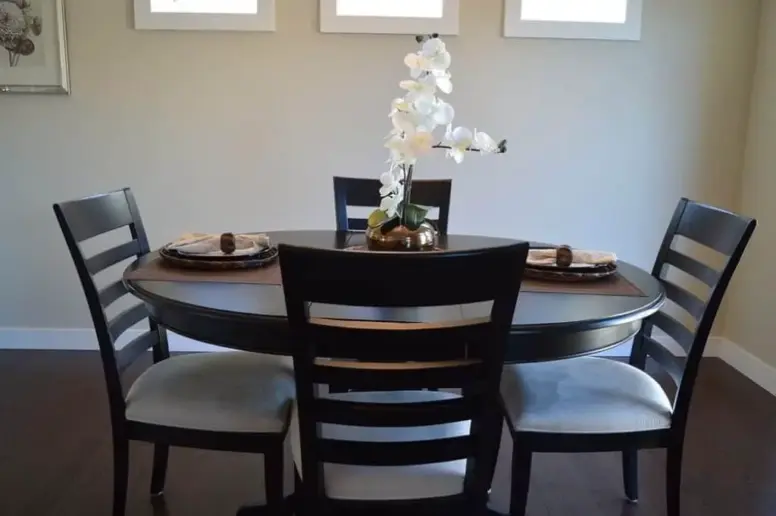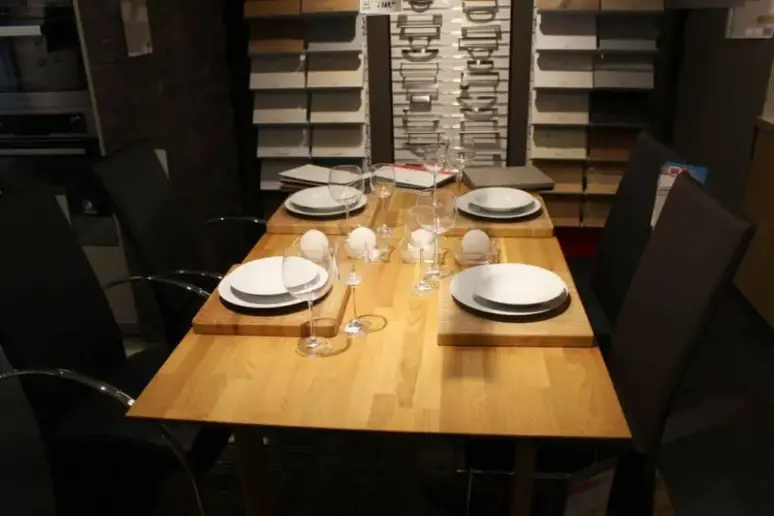How To Protect Dining Room Table From Scratches?
In most homes, the dining room table is the focal point of family life.
It’s the centerpiece of family gatherings and a place not only to enjoy the meal, but to communicate and share stories about everyone’s day.
However, it’s probably the piece of furniture that takes the most beating and is most exposed to wear and tear.
With all that’s going on during the dinner, it’s particularly susceptible to scratches.
And, once you’ve found the perfect table, the last thing you want is for its flawless appearance to be ruined by scratches.
For this reason, caring for your dining table and preventing the damage is crucial to maintaining its beauty for years to come.
To help you achieve this, I’ll share a couple of tips and tricks on how to protect dining room table from scratches and how to revitalize them once the damage has already been done.
So, let’s dive in!
How To Protect Dining Room Table From Scratches?

The dining room table is probably one of the most, if not the most, used piece of furniture in your house.
And, if you’re using a dining room table, you will most likely scratch it at some point or other.
There’s no way to avoid this and the only way to 100% protect your table is to not use it all, which, of course, defeats its purpose.
However, there are ways to minimize damage and keep the scratches at a minimum.
After all, the dinner table is often a major investment and you should do your best to keep it protected.
By doing so, you will also highlight its beauty as the focal point of the dining room.
Luckily, in most cases taking care of your dinner table won’t even require much time or effort, just some regular maintenance and proper protection.
Keep The Dust Away
While you may not think that it can cause much damage, dust on the table can easily lead to scratches on your dining room table.
If you fail to clean it on a regular, at least once or twice a week, the dust will build up and cause small scratches every time you move something like a plate over it.
There are a couple of things you should pay attention to while dusting your dinner table.
It’s best done with a soft cloth as a traditional feather duster may only cause it to spread more.
You shouldn’t wipe the table too hard, as it may cause more damage than good. Instead, use gentle circular motions, preferably in the direction of the wood grain.
Use Table Pads Or A Tablecloth
Since you can’t always stop occasional scratches, using a protective layer will at least help you keep the damage from the table’s surface.
Table pads are especially handy when it comes to moving heavier pans and dishes around the table.
They also provide space to place your glasses and utensils without worrying about them leaving their mark on the table’s surface.
However, when a whole family or any other group of people sits to eat, it’s probably better to use a tablecloth and cover the whole table.
You can go with linen or cotton tablecloths and chose the design and color that is the best match for the rest of the dining room.
Adding A Glass Tabletop
For more permanent protection, you can install a glass tabletop on your dining room table.
Besides protecting from scratches, it will also prevent all the accident liquid spills from reaching the table surface.
However, while providing the most protection, this is also the most expensive way of keeping the scratches away. Plus, it won’t reduce your cleaning duties.
Most dining room tables are manufactured in darker color tones.
The reflective surface of the glass on top of the dark background will make all the dust and every fingertip, every streak, and every crumb extremely visible.
How To Remove Scratches From Dining Room Table?

Even with all the precautions, you may still scratch your dining table.
When this happens, there are a couple of things you can do.
Removing Scratchers With Sandpaper
You can use steel wool or sanding paper to lightly scrub the area with scratches. Remember to always sand in the direction of wood grains.
Start with more coarse sandpaper (180 grit) and then even the surface out with something lighter like 240 grit sandpaper.
Deeper scratches may require smoothing the area with 320 or 400-grit sandpaper.
Once you finish, you should wipe the surface with a mineral spirit and a cloth and use polyurethane to coat the surface and give it a more natural look.
Removing Scratches With Crayons
Another nifty trick is using the child’s crayon.
They’re made of a selection of vaxes with the added strengthener and come in various colors which makes them perfect for the job.
Then, use a credit card or something similar to even the surface out. If needed, repeat the process several times.
Conclusion
Accidents will happen no matter how careful we are.
Just wearing a piece of heavy jewelry or a big watch at the table poses a risk of creating scratches.
With all the people sitting at the dining room table, an occasional scratch will occur sooner or later.
Unfortunately, these scratches can ruin the look of your table and make it seem old, and diminish its appeal.
Still, while the scratches will happen, this shouldn’t stop you from trying to get them to a minimum.
Following the advice mentioned above gives you the best chance to keep your dinner table looking beautiful and fresh for as long as possible.

















































































